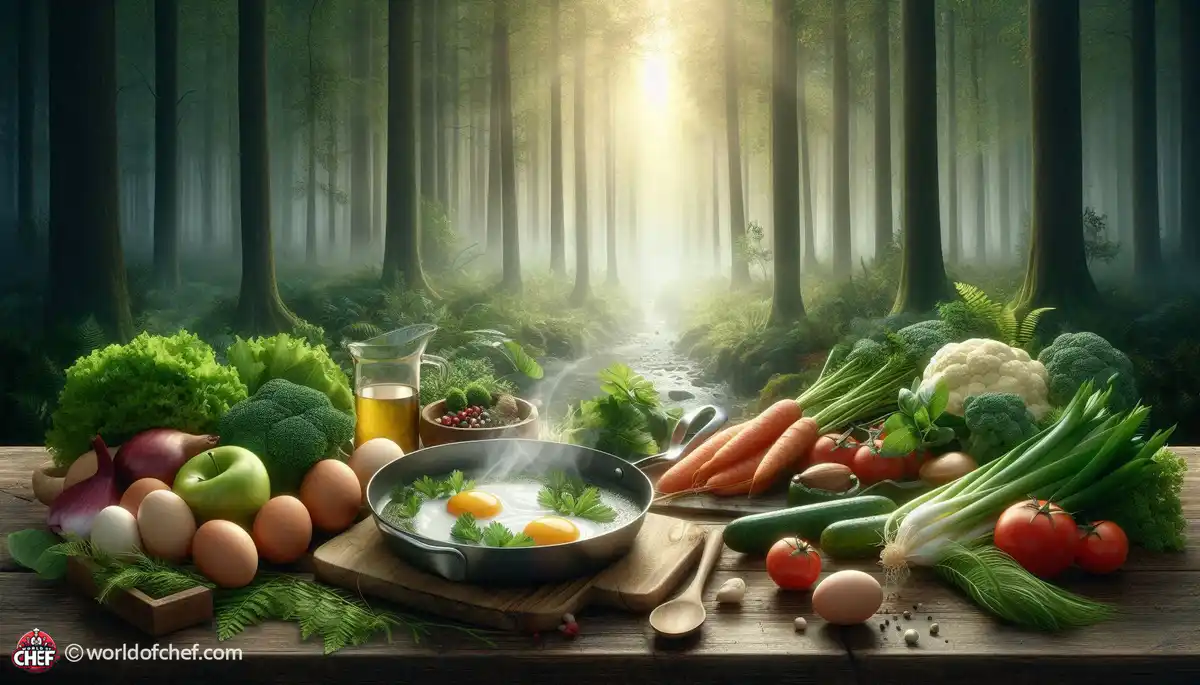
Simmering with Spices: Infusing Flavor into Your Dishes
Emery Donley - Oct 8, 2024 - 8 min read


Poaching is the gentle simmering of food in a flavored water, stock, or milk-based liquid. It is one of those techniques really associated with delicate foods such as fish, eggs, and fruits. Generally, moisture is retained and flavors are enhanced without adding extra fats at low, steady heat.
The idea of poaching, in essence, is control. This is because by keeping the temperature constant, the proteins in the food are less likely to denature at too rapid a rate, so the results are tender and juicy. The liquid in which you poach your food also adds subtle flavors to it, so the possibilities are endless.
These are the basics to learn the art of poaching. A large, shallow pan is a good conducting surface and allows for easier access to ingredients. A thermometer can be used to ensure the ideal temperature of the poaching liquid is achieved, ranging from 160 to 180°F (71 to 82°C). It is useful to have a slotted spoon or spatula to scoop out poached items without breaking them.
While poaching is a pretty low-tech technique, it is the quality ingredients that will take your dish over the top. Fresh seafood, farm fresh eggs and ripe seasonal fruit are all great candidates for poaching. The quality of your ingredients will shine through in the final product; don't skimp on freshness.
Liquid may vary according to dish. To poach savory foods, flavor broth or aromatic court bouillon. To poach sweeter foods, using a simple syrup flavored with herbs or spices may be okay because it adds depth to flavors. Regardless of the liquid, choose one that will complement the ingredients you are going to poach.
The right temperature is absolutely important in poaching. Too high, and your food is cooked too quickly to prevent any kinds of break over as well as dryness on the food's surface. And too low, leads to bacterial growth. Poach at a soft simmer, where small bubbles are just barely forming at the edges of the pan, but the surface is otherwise flat, adjust the heat as needed to maintain this balance.
Best about poaching is that it gives the food multitude of flavors. Fresh herbs, spices, citrus zest, and even aromatics like garlic and ginger can be added to poaching liquid to give subtle nuances to the dish. Experiment with various combinations to find your signature flavor profile.
Once your food is poached to perfection, remember the final touches. A drizzle of good-quality olive oil, a sprinkle of sea salt, or a squeeze of lemon will perk up and enhance the flavors of your dish. Garnishes like fresh herbs or toasted nuts add texture and visual appeal to make your poached creations irresistible.
Fish is perhaps the most widely used ingredient in poaching, since it is tender in texture and very mild in flavor. For Poaching Fish, select firm-fleshed fish such as cod, halibut, or salmon. Season the fish lightly and put it in the simmering liquid. Cook until just opaque and flaky.
Breakfast classic, the poached egg, is enjoyed for its silky yolk and tender whites. To make a perfectly poached egg, crack a fresh egg into a small bowl. Then slide it gently into simmering water spiked with a splash of vinegar. Cook 3-4 minutes until the whites are set but the yolk remains runny.
Poaching isn't just for savory dishes-it's also an excellent way to bring out the natural sweetness of fruit. Pears, apples, and stone fruits such as peaches and plums all do well simmered gently in a spiced syrup. Serve poached fruit over yogurt or ice cream for a simple yet elegant dessert.
While poaching fish or eggs is more common, chicken does quite well too. Use boneless, skinless breasts or thighs; season well and gently simmer in broth or water until cooked through. You'll have moist, juicy chicken perfect for salads, sandwiches, or soups.
One of the reasons poaching is difficult to cook is that it is very easy to overcook, so one has to be very vigilant with the temperature and cooking time not to make food tough and dry. If in doubt, undercook a little-it can be returned to the poaching liquid for a bit longer if needed.
Delicate ingredients such as fish or eggs should be handled gently when poaching. You want a large shallow pan, so you handle it minimally and never pull out the fish or eggs from the liquid of poaching. A slotted spoon or spatula helps to lift your food out without breaking it apart. Conclusion
Poaching is one of the most versatile methods for cooking because it allows you to have a very delicious and tender dish prepared easily. Mastering the basic poaching technique will unlock a vast world of culinary possibilities that would make you a hit among your friends and family. So grab your pan and thermometer, and start poaching your way to culinary perfection!

Emery Donley - Oct 8, 2024 - 8 min read

Russell Comeaux - Oct 8, 2024 - 8 min read

Walter Backus - Oct 7, 2024 - 8 min read

Samantha Thames - Oct 7, 2024 - 6 min read